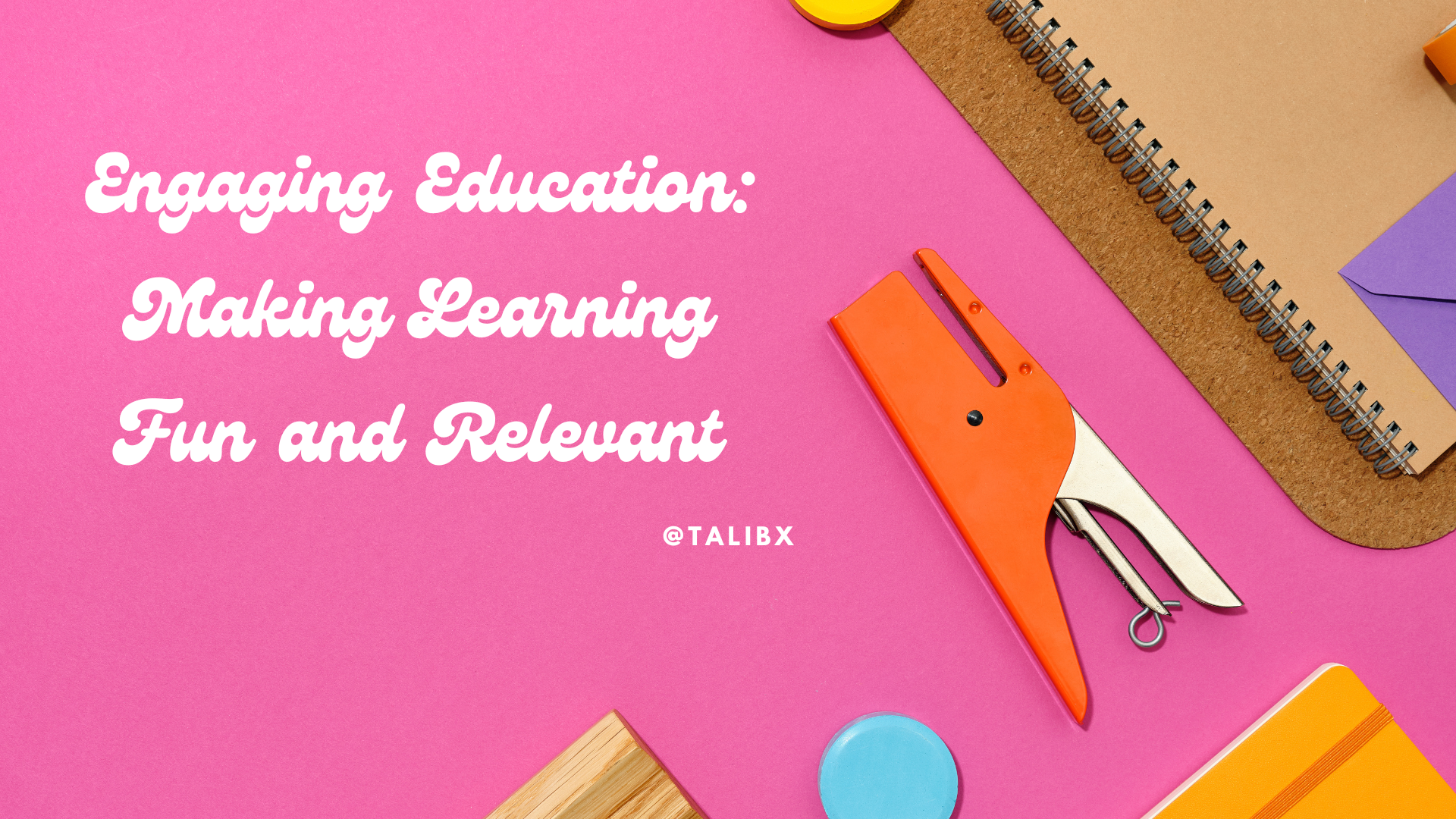Education is a fundamental aspect of human development, but sometimes it can feel dull and uninspiring for students. However, there are numerous strategies that educators can employ to make learning more engaging and captivating. In this article, we will explore some effective techniques and provide real examples of how they can be implemented.
Start with a warm-up:
Before delving into the core lesson, it's essential to capture students' attention and focus. A quick warm-up activity can serve this purpose. For instance, a history teacher named Mr. Ahmed begins his class by presenting a thought-provoking question related to the topic of the day. Students eagerly participate, sharing their insights and stimulating discussions right from the start.
Use technology:
Incorporating technology into the classroom can significantly enhance student engagement and interactivity. Mrs. Fatima, an English teacher, utilizes videos, interactive websites, and educational games to supplement her lessons. For instance, she shows her students a captivating video about Shakespeare's life, followed by an interactive quiz that allows them to test their knowledge. The use of technology not only makes the learning process more enjoyable but also helps students grasp complex concepts effectively.
Make learning relevant:
One of the key factors in maintaining student motivation is demonstrating the relevance of the material they are learning to their everyday lives. Mr. Kareem, a science teacher, achieves this by organizing practical experiments that showcase scientific principles in action. By witnessing the real-life applications of what they are studying, students become actively engaged and understand the importance of their academic pursuits.
Utilize a variety of teaching methods:
Ditching the monotonous lecture-style approach and incorporating diverse teaching methods can work wonders in keeping students engaged. Ms. Amira, a mathematics teacher, encourages group work, discussions, and hands-on activities in her classes. She assigns group projects that require students to apply mathematical concepts to real-world scenarios. This approach fosters collaboration, critical thinking, and active participation, making the learning process more enjoyable and meaningful for her students.
Make learning fun:
Learning should never be a tedious chore; it should be a source of joy and enthusiasm. Mr. Omar, a physical education teacher, introduces exciting and interactive games that integrate educational content into physical activities. By infusing fun and playfulness into his lessons, he ensures that students remain engaged while acquiring knowledge and skills.
In addition to the above strategies, here are some further tips for creating an engaging learning environment:
- Get to know your students: Understanding students' individual needs and interests enables you to tailor your teaching methods accordingly. Mrs. Sara, a history teacher, takes time to learn about her students' hobbies and interests, incorporating related examples and anecdotes into her lessons to make them more relatable.
- Create a positive learning environment: A supportive and inclusive classroom environment fosters student engagement. Mr. Ali, an art teacher, encourages open communication, respect, and teamwork among his students, promoting a safe and welcoming atmosphere that motivates students to actively participate.
- Be enthusiastic: Your passion for the subject matter can be contagious. Ms. Laila, a geography teacher, showcases her genuine enthusiasm for exploring different cultures and places, igniting curiosity and interest among her students.
- Be patient: Students learn at different paces, and it's crucial to be patient with those who may be struggling. Providing extra support, one-on-one guidance, or alternative explanations can make a significant difference in their engagement and progress.
By implementing these strategies and incorporating real-life examples, educators can transform their classrooms into dynamic learning environments. Engaged students are more likely to absorb knowledge effectively, develop critical thinking skills, and enjoy their educational journey.




